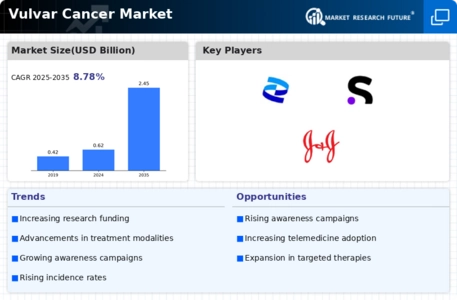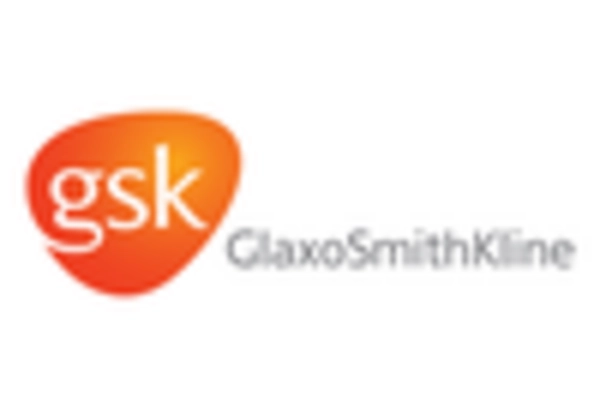Market Trends
Key Emerging Trends in the Vulvar Cancer Market
The global market trend for vulvar cancer shows a disturbing increase in incidence rates. Vulvar cancer has become a major public health issue due to a decade-long surge in incidence. Market trends follow demographics, with postmenopausal women most affected. Additionally, certain locations have a greater frequency, suggesting regional variables may affect market dynamics. In recent years, vulvar cancer detection technology and techniques have improved. Advanced screening methods including molecular and genetic testing aid early diagnosis. These tools offer rapid intervention, improving patient treatment outcomes. New treatment approaches are a major industry trend. Targeted medications and immunotherapy are changing the game, offering more effective and patient-specific treatments. Traditional methods like surgery and chemotherapy remain popular. Due to efforts and education, women's health awareness has increased screenings and early diagnosis. This trend must continue to reduce vulvar cancer incidences and improve survival rates. Clinical trials and research projects researching new drugs and vulvar cancer's molecular roots are influencing the market. These endeavors aim to identify novel treatments that will expand patient choices. Despite advancements, healthcare cost and access remain issues. Addressing these issues is crucial for fairness and market improvement. Pharmaceutical corporations, research institutes, and healthcare groups are increasingly partnering. Significant development. Such partnerships promote resource sharing, accelerate research, and provide more affordable and accessible treatment choices. Patient-centered methods that emphasize medical and holistic care are becoming increasingly common as a paradigm shift. Vulvar cancer treatment must be comprehensive to address its physical and emotional aspects. Counseling, patient education, and supportive therapy are essential to this technique. Regulations greatly impact the vulvar cancer market. Stringent licensing rules for drugs and treatment modalities define the market and set industry norms. These parameters assure therapy safety and effectiveness during treatment. Artificial intelligence and data analytics are being used to diagnose and cure vulvar cancer. These technologies improve evaluation and treatment accuracy. The COVID-19 pandemic has disrupted the vulvar cancer market, limiting patients' access to prompt diagnosis and treatment. To continue fighting vulvar cancer, these consequences must be mitigated.









Leave a Comment